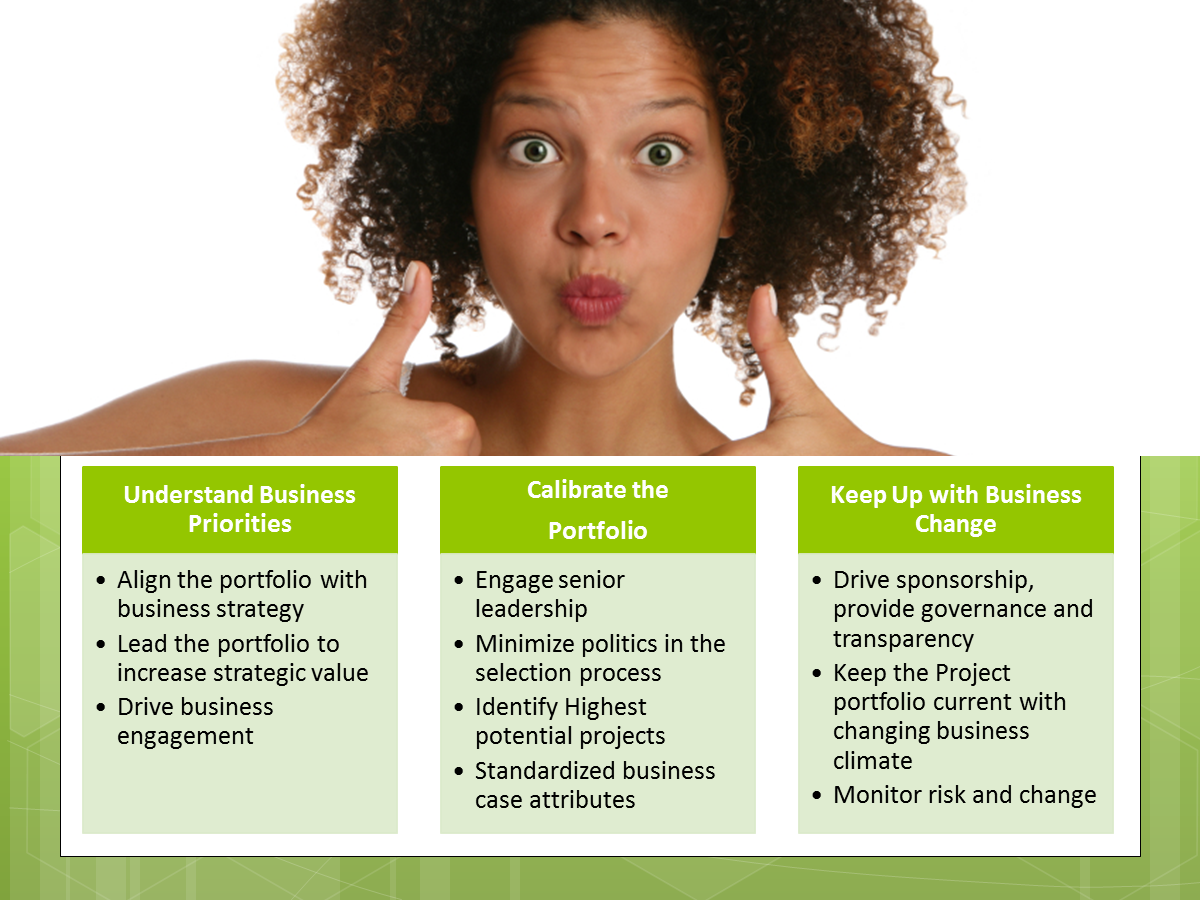Growing up: From Engaging the Business to Coping with Change

Growing up: From Engaging the Business to Coping with Change
Project prioritization remains one of the PMO’s key opportunities to generate business value.
The PMO remains under real pressure to generate business value within the limits of modest budget
growth. To manage with this challenge, PMOs need to ensure the business project portfolio reflects
a balance of projects that maximizes benefits for the enterprise.
The challenges PMOs face in balancing project portfolios include:
- Understanding project value and generating consensus
- Keeping up with changing business needs
- Aligning the project portfolio with business’ priorities
These challenges were mirrored in a finding from a Forrester Research survey of PMOs,
who listed poor sponsorship, politics, project coordination, misalignment between
business strategy and the investment pool as the key hindrances to project prioritization.
Project Portfolio Management Lifecycle
Even though such challenges exist, many enterprises
have made real progress in removing these obstacles.
Project prioritization solutions help PMO shops guarantee that decisions are made by
senior business leaders using “real knowledge”— enhancing the enterprise’s acquired and
collective knowledge and experience with a framework for basing good decisions on objective
business criteria.
Portfolio Prioritization is an Ongoing Process
Managing the Project portfolio and prioritization of project investment is a
continuous process that requires regular stakeholder involvement and engagement
with benefits from built in mechanisms that systematically react to business change.
Ensuring the project portfolio is always full with strategically aligned investments
is of key importance to helping PMOs impact their organizations. To make this happen,
the PMO needs to impose a project prioritization methodology that reflects the
organization’s strategic business and monitors changing situations throughout the
project portfolio lifecycle.
Exceptions Monitoring
The initial step in this approach is to understand the business priorities and linking
them to the enterprise’s project investment portfolio. To ensure the objectives of the
senior-most business leaders are aligned with business strategy, thus ensuring that all
projects compliment overall business strategy and that project performance is tied to
business value.
As business strategy can change and is not always
exact enough to create detailed drill down plans, The Guardian Life Insurance Co. uses a
strategic priorities ‘heat map’ to illustrate business goals and start a conversation
about project investments. Still to be considered is the task of converting business
requirements into projects. Morgan Stanley places all business processes on a “value/maturity
matrix” differentiate highest-value opportunities. By doing this, a pipeline of high-value
projects that cuts across the enterprise comes into play. If the PMO is well situated,
it will harness insight because of cross-unit visibility to identify opportunities.
Additionally, by using this process, the PMO is well positioned to come to the table
with a solid project list grounded in the business’ priorities.
Linking Project
Opportunities to Strategic Priorities
Some companies use a generalized business case to minimize politics. Depending on
an enterprise’s strategic business objectives, they may build a solution that moves
the project portfolio toward required project types. Don’t get sidelined. Seek out
the highest-impact investments by focusing on ‘strategic’ and ‘high potential’ projects.
Build a grid that aims to reduce effort on the
highest and lowest value projects to make time for the hard decisions.
The approach minimizes impacts to the prioritization process while it helps
establish agreement. To ensure the project portfolio is widely accepted and
accurate make sure that business stakeholders are included in prioritization
process. To keep up with mapping the portfolio companies meet quarterly, or more
often to maintain an on-going view.
Keeping Up with Need
Even the best prioritization processes implemented need to keep current with change.
Over the course of a given year, changes will alter a project’s business case. Put
in place mechanisms to ensure project investments are current. Meet regularly to
reassess the portfolio. Provide a regularly updated risk register to serve act as a
warning indicator. Reevaluate projects at regular intervals with required sponsor sign-on.















